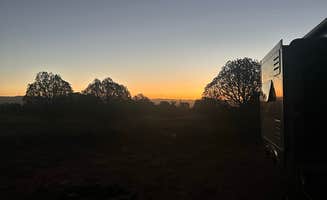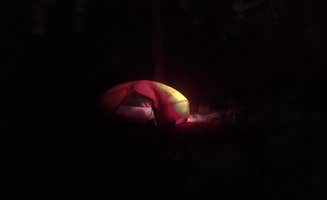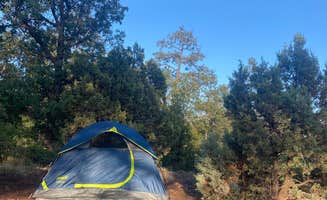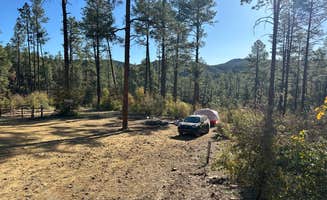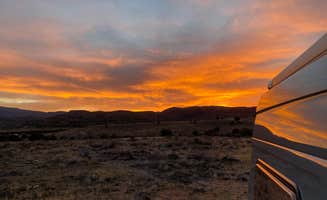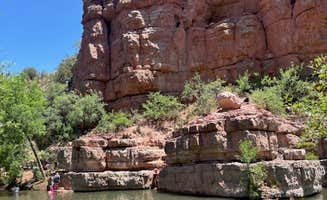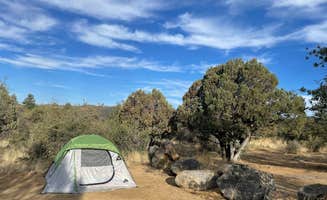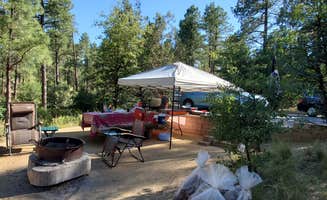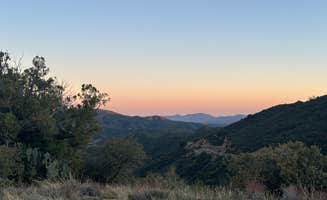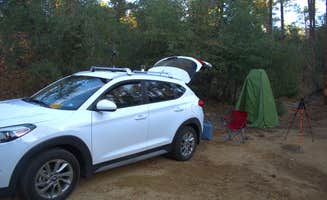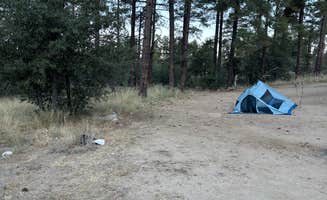Dispersed camping sites near Chino Valley, Arizona offer elevated camping experiences between 4,000-7,000 feet, providing cooler temperatures than the Phoenix valley. Most sites sit among juniper and piñon pine forests with occasional ponderosa stands at higher elevations. Weather patterns in this region create distinct camping seasons with comfortable spring and fall conditions, while summer monsoons typically arrive by early July.
What to do
Hiking opportunities: From Edge of the World (East Pocket), access numerous day hikes with valley views. "There are several camp sites in the east pocket and it will feel secluded even if there are people around. No facilities so pack it in and pack it out," notes Katelin M., highlighting the area's natural isolation.
Stargazing sessions: The darkness at dispersed sites creates exceptional astronomy opportunities. One camper at Kaibab National Forest reports, "Open with no light pollution... We found a spot but it seems like you could pull off anywhere on the gravel road." Many campsites feature elevated clearings with 360-degree night sky visibility.
Wildlife watching: Early mornings and evenings bring diverse wildlife activity. At South Mingus Mountain, visitors report seeing "cows, bulls, deer, mountain lion, fox, coyote" according to camper Chris P. Bring binoculars and maintain proper food storage practices to minimize animal encounters at your campsite.
What campers like
Cellular connectivity: Unlike many remote camping areas, several Chino Valley sites maintain workable connections. "T-Mobile pretty solid. One of the nicer disparate sites I've encountered," reports Michael F. about North Mingus Mountain Basecamp on Forest Road 413. Even remote sites sometimes offer surprising connectivity.
Privacy between sites: Campers consistently mention well-spaced camping spots. Van UT G. states North Mingus Mountain has "Lots of space, quiet, scenic drive to get to the spot." Similarly, on Senator Hwy, Monte W. notes that "spots are a nice distance away from each other" with established camping areas clearly marked.
Year-round accessibility: Unlike higher elevation areas that close seasonally, many Prescott Basin - Ponderosa Park Road Dispersed Camping sites remain accessible through winter months. "Only 20 min from Prescott, with several nicely cleared designated camping spots. Nice level spots for parking our RTT rig," reports Heather S. Winter camping requires preparation for overnight temperatures that can drop below freezing.
What you should know
Road conditions vary seasonally: While many access roads remain passable year-round, conditions change with weather. At FDR 373 Thumb Butte Loop, Nancy N. warns, "Found a great spot. Quiet, mostly trash free. But was a big mistake to bring trailer up due to road conditions." Forest roads receive limited maintenance, particularly after storms.
Weekend crowding: Prime sites fill quickly on weekends, especially during pleasant weather months. Sam P. notes about Thumb Butte Loop: "Great place to escape from the city and get to cooler temps... Wind picks up in the morning and late afternoon. It's so loud sometimes it sounds like a waterfall crashing down."
Fluctuating temperatures: Daily temperature swings of 30-40 degrees common, even in summer. James at Senator Highway warns about specific conditions: "This wonderful spot gives amazing evening and sunset views... I would point out that when I went the wind was pretty strong at night. This spot can get pretty gusty. FYI if you plan to tent camp."
Tips for camping with families
Fire preparation: Bring your own firewood and a portable fire pit for areas with seasonal fire restrictions. "Lots of pull offs to pick from but it's very limited spacing. You're going to be mere feet from the road so it's not a long or wide open pull off," notes Jordon H. at Ponderosa Park Road sites, which often have existing fire rings but may limit fires during dry conditions.
Child-friendly sites: Select sites with natural boundaries and level terrain. At 573 Forest Road Dispersed Site, Alisa P. reports, "This place is fabulous. The spots closer to the entrance are only about 100 yards apart but as you travel down the road they are further spread out. Some sites have fire pits and some don't."
Water supply planning: No drinking water available at any dispersed sites. Each person requires 1-2 gallons daily depending on activities and temperatures. Most campers bring 5-7 gallon containers plus individual bottles for day activities since resupply requires returning to town.
Tips from RVers
Site selection for larger vehicles: RVs should scout sites before committing. Cody P. recommends specific locations at Thumb Butte: "We drove our Chevy 2500 and a 28' camping trailer... Site 4 was large and backed up to a nice hiking trail and vista... Passed site 4 there were numerous other sites include some on the peak with excellent views. However if you have an rv or camping trailer site 4 was ideal."
Weather monitoring essential: Sudden rainstorms create impassable roads. At South Mingus Mountain Basecamp on Forest Road 413, Michael F. advises, "Stay away if rain is in the forecast. This place gets muddy and you will get stuck in a larger RV." Weather patterns can change rapidly, particularly during monsoon season.
Leveling preparation: Bring substantial leveling blocks as many sites feature uneven terrain. Multiple campers mention finding "relatively flat" areas, but nearly all require some adjustment for comfortable sleeping and proper refrigerator operation in RVs.


